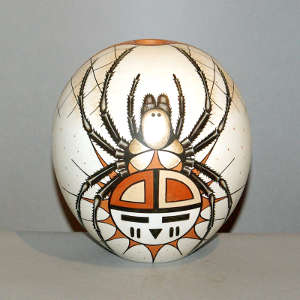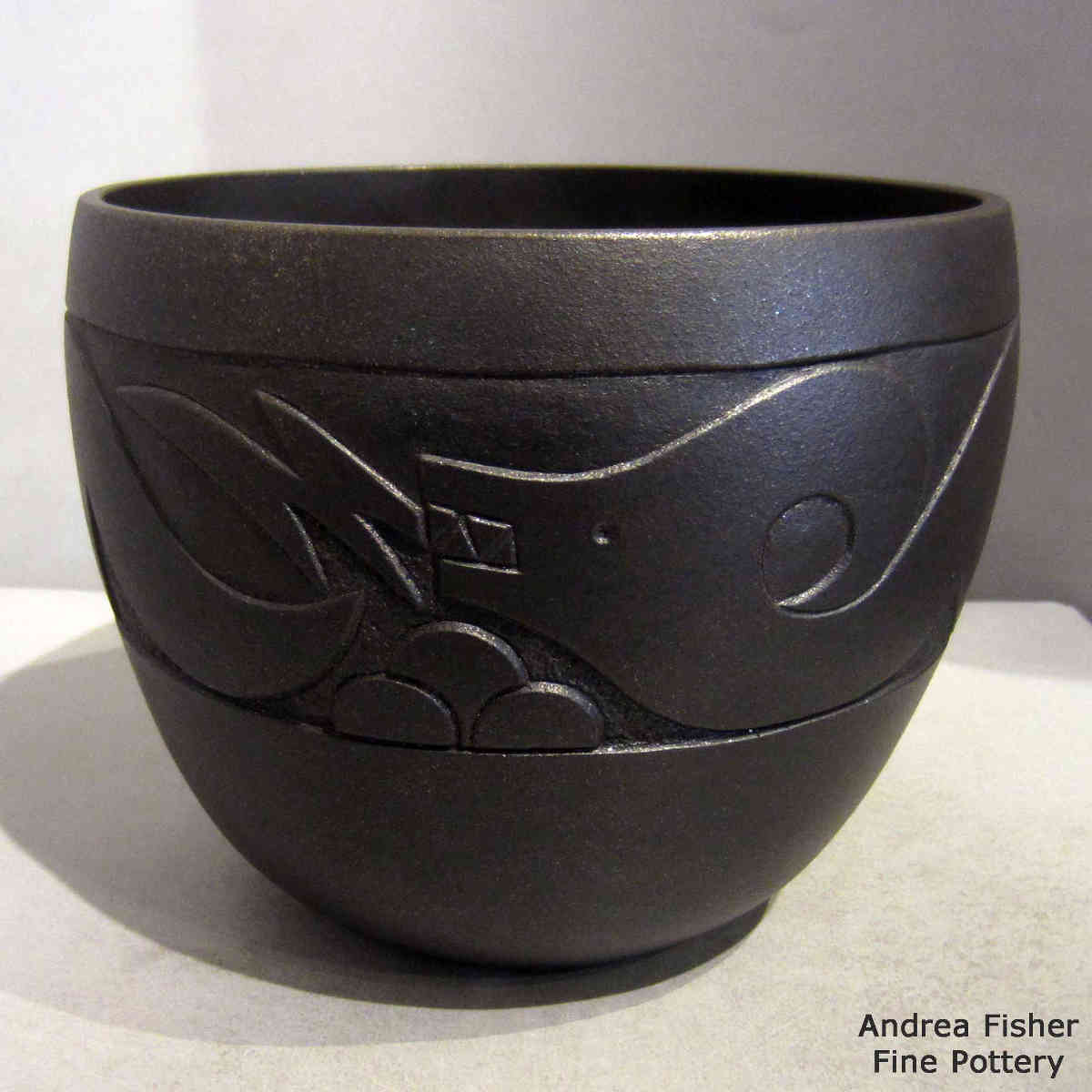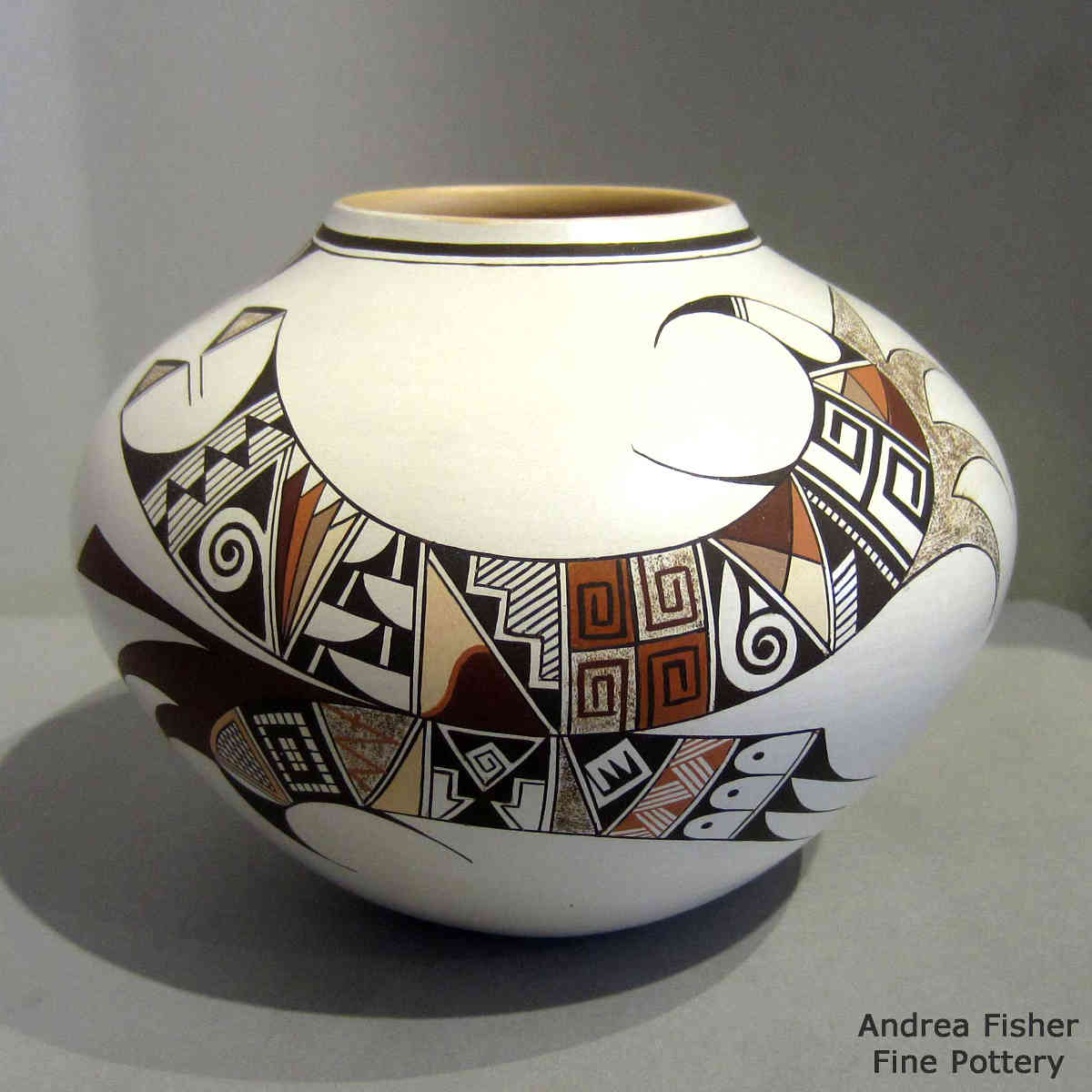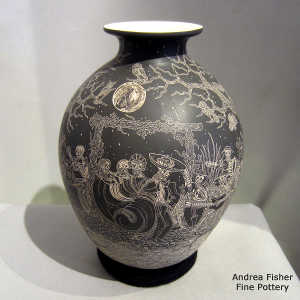Design Elements: Slips

Polychrome white ware seed pot decorated with a sun-face spider design
by Burel Naha, Hopi
6 in H by 5.25 in Dia

Micaceous black jar lightly carved with an avanyu design
by Robert Vigil, Nambe
5.75 in H by 7.25 in Dia

Polychrome jar decorated with a bird element, shard and geometric design
by Rainy Naha, Hopi
5.75 in H by 7.5 in Dia

Black and white jar decorated with a sgraffito Night of the Dead motif
by Hector Javier Martinez, Mata Ortiz
10.25 in H by 7.75 in Dia
Measurement includes stand
In most cases, a slip is a watered down clay powder applied to the surface of a vessel with a brush or rag, generally to provide an element of color contrasting with the color of the substrate. Sometimes several slips are applied and once all are dry, the surface is carved or scratched and the resulting colors will depend on the depth of the cut or scratch. The same for "marbleized" slips.
There was a period in the 1880s when a drought in Hopi country forced many families to relocate to the nearby friendly (and wetter) country of the Zunis. The Zuni potters of the time were mostly producing a form of whiteware with a white slip over the surface that was then decorated with various pigmented designs and fired. That white slip would often crack in the firing and today, pots from the place and time are dated by that crackled surface. The Hopi versions are known as Polacca Polychrome and that was the primary product produced by Nampeyo of Hano in her early years.
When the Hopis returned to their mesas near the end of that decade, they carried that method of potting with them and it survived until Nampeyo resurrected the Sikyatki method of doing things. Even then, the Naha and Navasie familes still produce whiteware, although Helen Naha modified their process in the early 1950s so the white slip they use no longer cracks.
Robert Vigil forms his clay body, carves or scratches it with the design he wants, then he slips the form with a watered down micaceous clay before firing it. If he lets the fire burn straight through, he'll have a golden micaceous piece with maybe some black fire clouds. If he smothers the fire in manure near the end of it, he'll have a black micaceous piece.
Hector Javier Martinez starts with a white clay body and applies several coats of crushed manganese (black) slip. Once that has dried enough, he begins scratching his designs through that thin black surface using a sewing needle taped to the end of a stick (some Mata Ortiz potters use sharpened bicycle spokes and others use dental tools for the same purpose). When done with his design work, he then fires the pot in a regular oxydizing atmosphere and the manganese comes out a slightly less lustrous black than if the piece were fired in an oxygen-reduction atmosphere. If it were fired in a reduction atmosphere, the design work would almost entirely disappear.